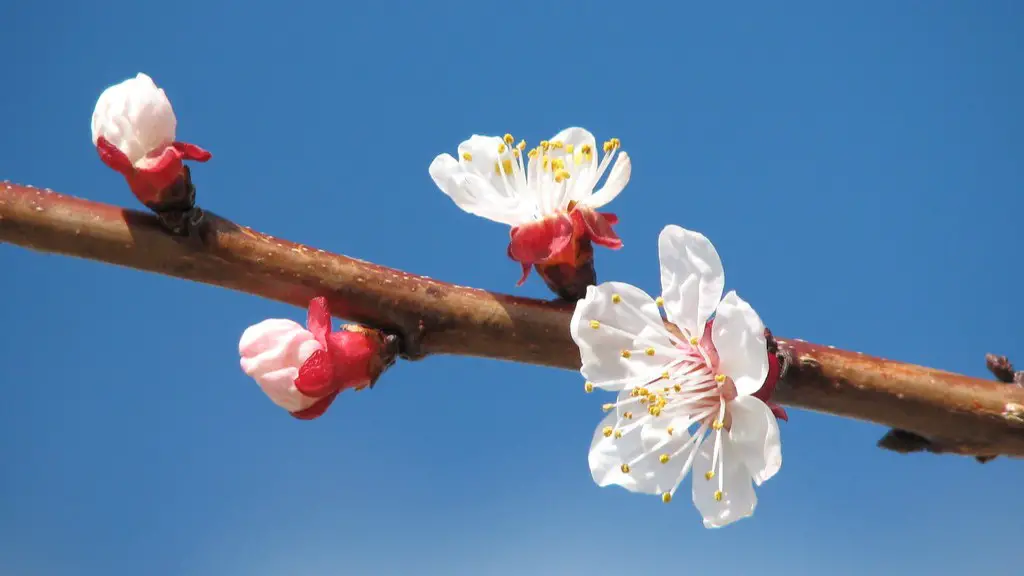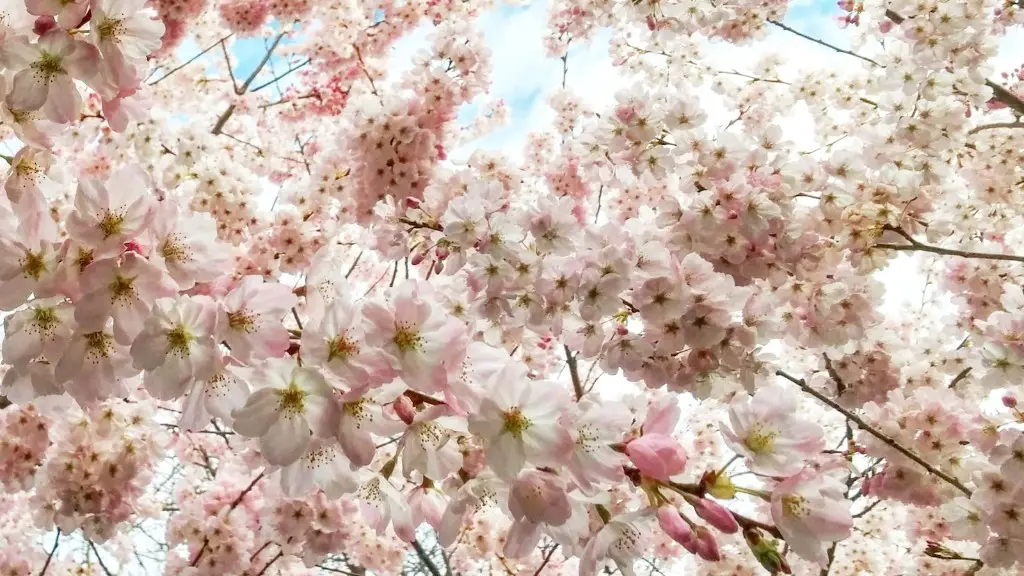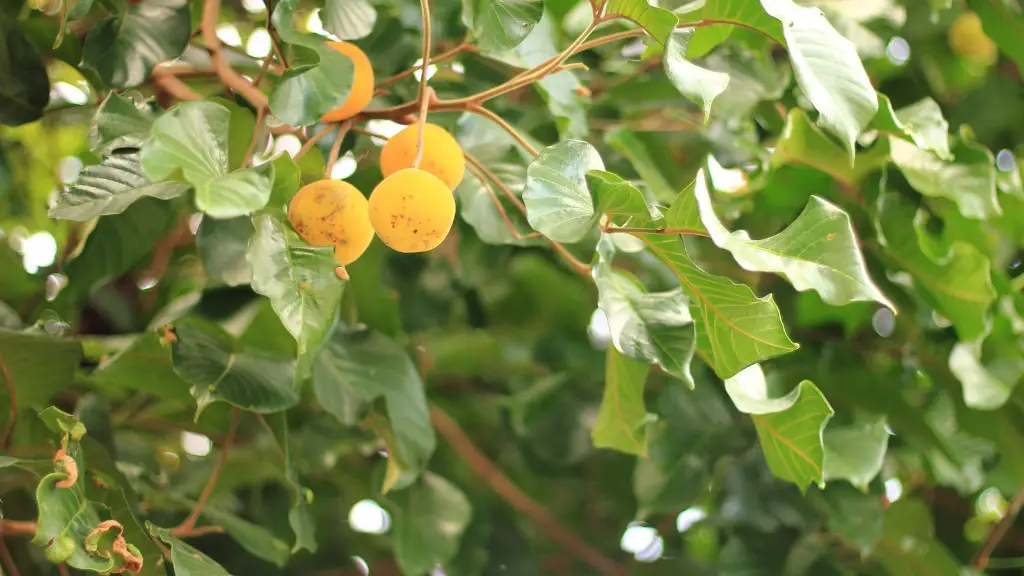If you want to know how to make an apple tree produce fruit, you have come to the right place. An apple tree will only produce fruit if it is properly cared for. The following steps will show you how to make sure your apple tree is healthy and produces a good crop of apples.
The process of fruit production begins when the flowers on the tree bloom and are pollinated by bees who transfer pollen from the stamen to the pistil. Once the pistil has been pollinated, the flowers fall off and small, green apples begin to grow in their place. As the apples mature, they will gradually turn red, yellow, or green, depending on the variety of apple tree. In order for an apple tree to produce a large amount of fruit, it is important to thin out the apples early in the season so that each apple has room to grow.
Why isn’t my apple tree producing fruit?
The lack of fruit on your apple tree could be due to a number of factors, including the absence of flowers, poor pollination, or low temperatures during bloom. The lack of flowers is often due to the age of the tree – after planting, most dwarf and semi-dwarf apple trees don’t flower and bear fruit for 3 to 5 years. If the tree is still young, be patient and wait for it to mature. If the tree is older and has never borne fruit, there could be a problem with pollination. Make sure there are plenty of bees in the area, and if not, you could try hand-pollinating the flowers. Finally, low temperatures during bloom can also prevent fruit set. If the weather has been unusually cold during the blooming period, this could be the cause.
Fruit trees need six basic things to produce fruit: tree development, pollination, hardiness zones, pruning, spacing, and soil conditions.
If your fruit tree is still too young or immature, it won’t be able to produce fruit. The tree needs to be developed enough to support fruit production.
Fruit trees also require pollination in order to set fruit. Without pollination, the tree will not be able to produce fruit.
Hardiness zones are important for fruit trees because they need to be able to withstand the conditions in the zone where they are planted.
Pruning is also important for fruit trees because it helps to keep the tree healthy and to encourage fruit production.
Finally, spacing and soil conditions are also important for fruit trees. The tree needs to be spaced properly in order to allow for adequate root growth and the soil needs to be of good quality in order to support the tree.
How long will it take for an apple tree to bear fruit
There are several reasons to choose a dwarf or semi-dwarf apple tree over a standard tree. Dwarf and semi-dwarf trees take up less space, so they are a good choice for small yards. They also produce fruit more quickly than standard trees. Dwarf and semi-dwarf apple trees are available in a wide range of varieties, so you can choose the type of apple that you like best.
Apple cultivars require a specific amount of chilling hours during winter dormancy in order to bloom. If they do not receive the required chilling hours, their internal signals get crossed and they don’t receive the message that spring has arrived.
Why has my apple tree got no apples?
Over-pruning or poor pruning can lead to a number of problems, including vigorous shoot growth at the expense of fruit, the tree putting more energy into compensating for lost foliage at the expense of fruit, and a large crop of very small apples.
Apples are self-unfruitful, meaning they need to be cross-pollinated with another variety of apple tree in order to set fruit. Plant at least two different apple tree varieties within 50 feet of one another for a good fruit set. Some apple varieties, such as Golden Delicious, will produce a crop without cross-pollination from a second variety.
Why are my fruit trees not fruiting?
A lack of fruit crop can be caused by many factors, such as frost damage, poor pollination, competition with other crops for nutrients, inadequate sun exposure, and more. Another reason fruit trees don’t bear fruit is the effect from last year’s crop. Fruit trees form their flowers the previous growing season, so if there was a poor crop last year, this can affect the fruit crop this year.
Epsom salt is a great way to increase the magnesium levels in fruit trees. This will help them yield larger, sweeter, and more fruits. It works great also for nut trees and fruit shrubs.
What is the best fertilizer for apple trees
Fruit trees prefer an organic, high nitrogen fertilizer to help them produce more fruit. Blood meal, soybean meal, composted chicken manure, cottonseed meal, and feather meal are all good, organic nitrogen sources. If you can’t find any of these, you can also use an organic fertilizer with a high nitrogen content.
Here are some tips for growing trees faster:
1. Chill hours: The apple tree needs hundreds of chill hours per season to thrive and bear fruit.
2. Watering: Young trees require a lot of water – 2 inches of water every week.
3. Fertilizing: Mulch Pruning.
How do you prune an apple tree to bear fruit?
To prune an apple tree, start by removing any dead, diseased, or damaged limbs. Next, prune any competing central leader branches. Then, prune any non-primary scaffold branches. Finally, prune any suckers and downward or inward growing branches.
Apples trees set fruit in the spring and the apples mature from late summer through fall. Each apple variety matures on its own particular schedule, with early varieties like Zestar ripening first.
Do all apple blossoms turn into apples
Apple blossoms are extremely delicate and need to be pollinated in order for the apple tree to bear fruit. The process of pollination requires the transfer of pollen from one flower to another. This can be done by wind or by insects, such as bees.
Grafting is a common practice in commercial orchards to encourage apple tree pollination. A good pollinator is grafted onto the top of a less pollinating variety, typically every third tree in every third row. This allows the pollinator to transfer pollen to the other apple trees, resulting in better fruit production.
What helps apple trees grow?
Apple trees need full sun, a good amount of space, loamy soil, and a neutral soil pH. A soil test can be obtained for a small fee through your local USDA cooperative extension office.
Bees are essential pollinators of apples, with honeybees, mason bees, and bumblebees being the main species. The smell and color of apple flowers signals to bees that there is tasty nectar waiting inside, and when a bee visits a flower, pollen sticks to their hair and is carried to the next flower. This process ensures that apples are properly pollinated and can produce healthy fruits.
Conclusion
To make an apple tree produce fruit, you need to ensure that the tree is getting enough sunlight, water, and nutrients. You also need to make sure that the tree is pruned and thinned properly, so that the fruit can develop and ripen properly.
The best way to make an apple tree produce fruit is to start with a young tree and prune it regularly. Also, make sure to keep the tree well-watered and fertilized. Lastly, pick the apples when they are ripe and enjoy the fruits of your labor!





